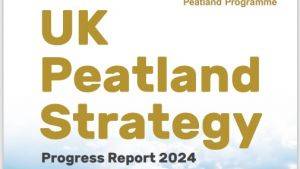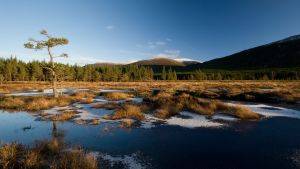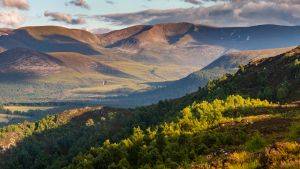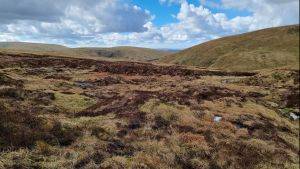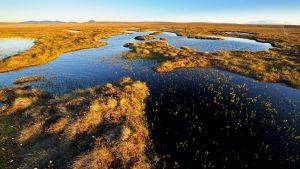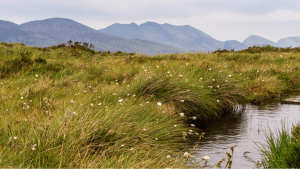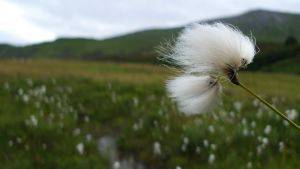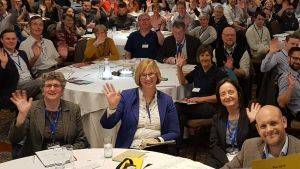Lake Vyrnwy (Breathing LIFE into Welsh blanket bogs)
Introduction
Practical restoration work at two Special Areas of Conservation in mid-Wales has aimed to bring the blanket bog in these two locations into favourable condition. Work has included a combination of ditch blocking, plantation forestry removal and the extraction of invasive, non-native plant species.
Description
It is estimated that 70,000 ha of deep blanket peat soils occur in Wales, although probably more than 10% of this no longer supports blanket bog vegetation. The LIFE Active Blanket Bog in Wales project aimed to achieve significant and sustained improvement in the condition of blanket bogs across key areas of two Special Areas of Conservation (SAC) in mid-Wales:
- The Berwyn and South Clwyd Mountains SAC (27,221 ha)
- The Migneint-Arenig-Dduallt SAC (19,968 ha).
The primary problems affecting the condition of blanket bog in the project areas included drainage ditches, forestry plantations, inappropriate grazing levels and encroachment by non-native species. In addition to practical restoration work, the project wanted to increase the knowledge and understanding of blanket bog habitats in order to improve their future management.
Restoration Delivered
This project has been successful at many levels, changing attitudes locally and bringing blanket bogs and their importance to the notice of decision makers and policy makers. The combination of practical work on a landscape scale, supported by rigorous monitoring and cutting edge science has enabled this high profile project to help inform policy across the whole of Wales and has contributed to the understanding of this ecosystem on a UK and international platform.
Site Activity
The moorlands of Wales are a significant part of Welsh cultural heritage. Working with the local farming community was of particular importance to this project as this was the first time practical upland restoration work had been carried out in the area. Farmers were invited to visit the project in conjunction with an extensive programme of community events, such as guided walks and talks, attendance at local shows and a large school education programme. Initially there was considerable unease about the management programme, however towards the end of the project a significant shift in perception was observed.
The LIFE project has been successful in restoring significant areas of important habitat, developing skills, refining techniques and gaining the interest and support of the local community. The project far exceeded its targets for restoration work, rewetting a total of 7,200 ha of upland habitat. In total 485 km of grips were blocked, 249 ha of forestry plantation was removed and non-native plant species were removed across an area of 6,300 ha. Furthermore, the associated scientific knowledge gained during this project has also helped add to the understanding of moorland management and its effect on climate. Farms in the catchment also produce organic wool, and organic Welsh black beef and Welsh mountain lamb. As well as being used as a conservation tool for habitat management purposes, sheep and cattle form the basis of a commercial farming operations, which contribute to the local economy.
Partners
- Countryside Council for Wales
- Forestry Commission.
Project Name: Lake Vyrnwy (Breathing LIFE into Welsh blanket bogs)
Organisation / Lead partner: RSPB
Location: Lake Vyrnwy, Wales
Approximate area covered: 5479 ha
Conservation Status: Special Area of Conservation (SAC), Special Protection Area (SPA), Nature Reserve (NR)
Predominately: Upland
Peat Habitats: Blanket bog
Project Type: Restoration, Management, Citizen science/ community engagement.
Year Project Began: 2007
Project End Date: 2011


